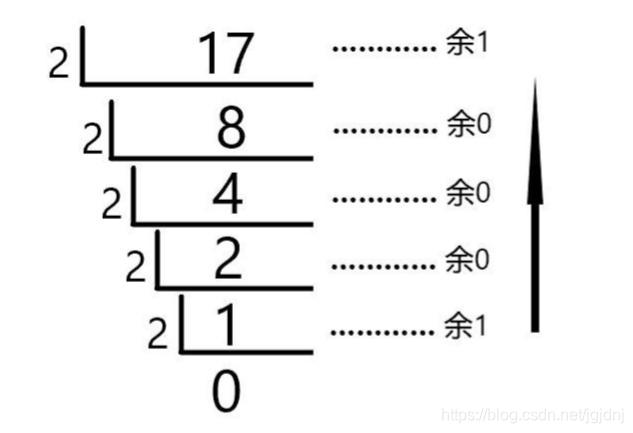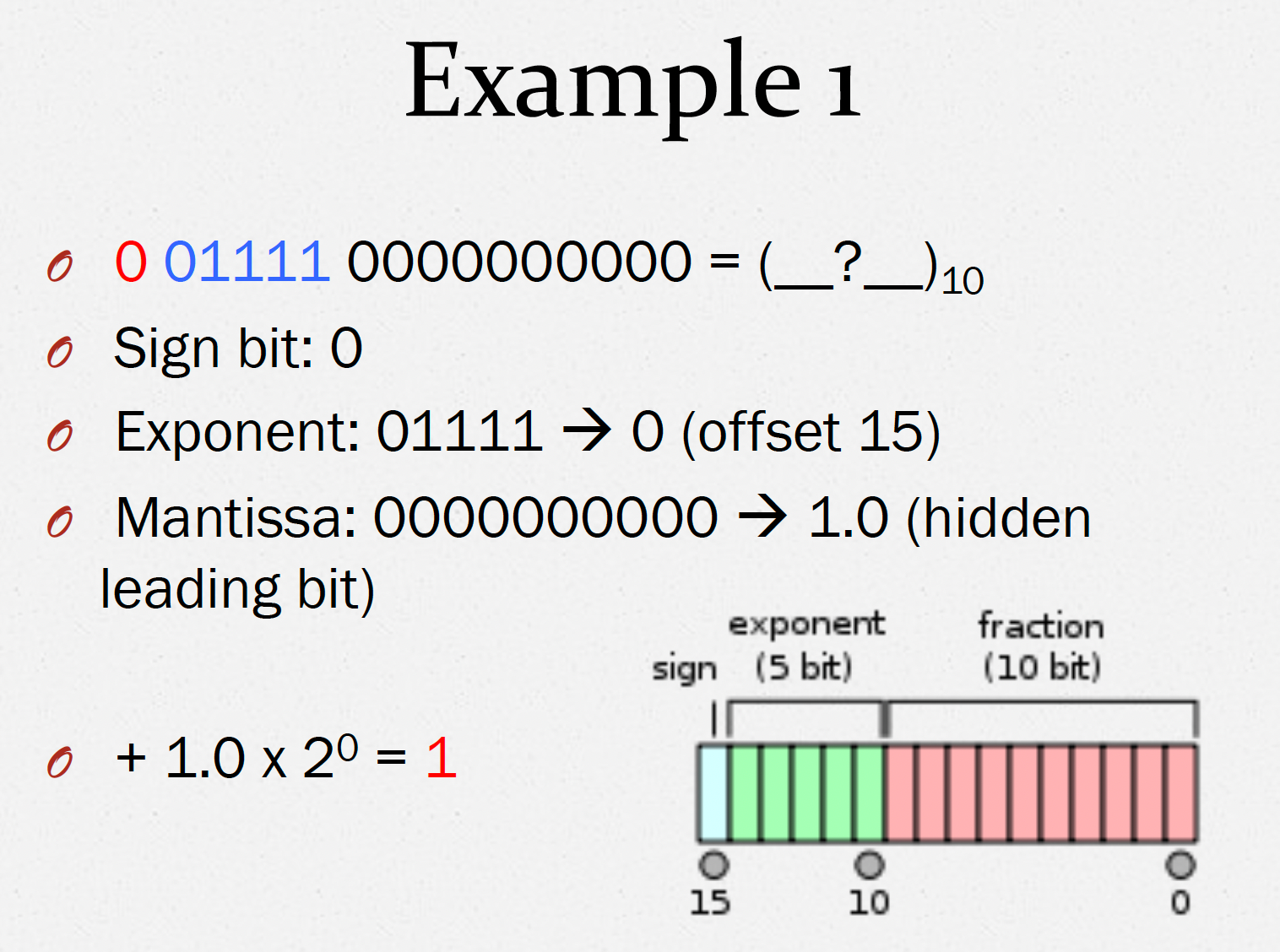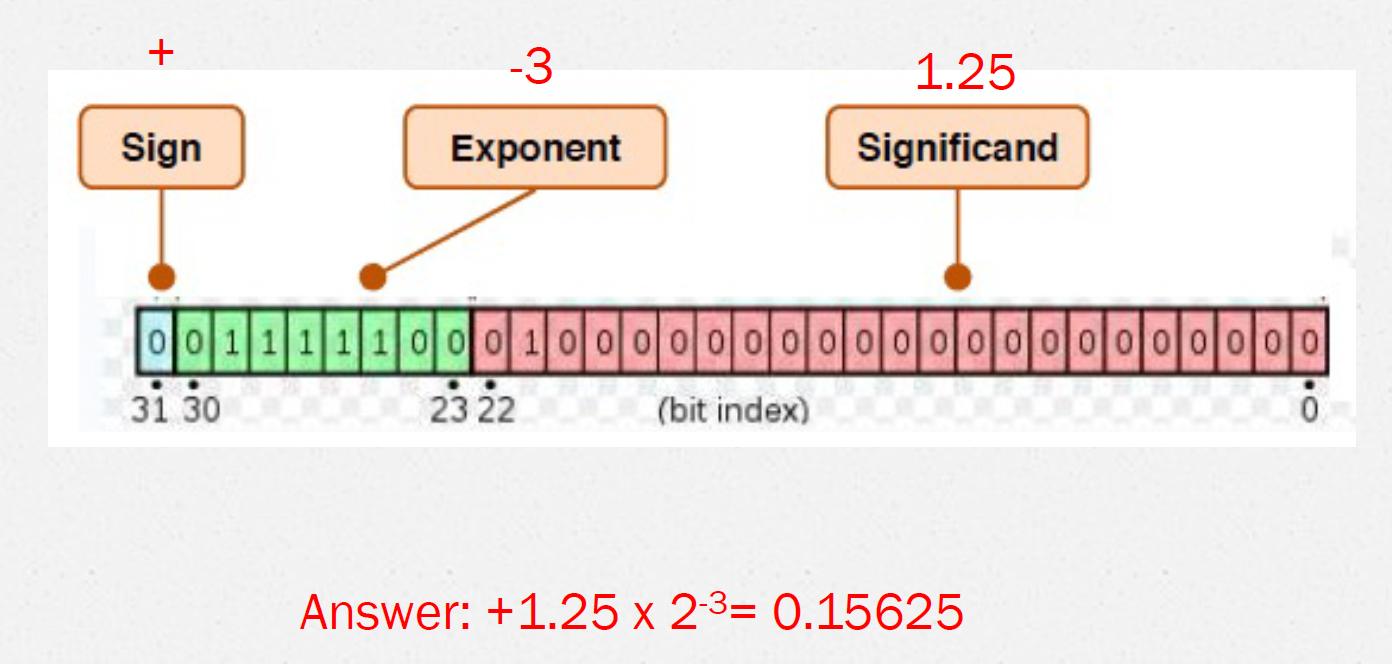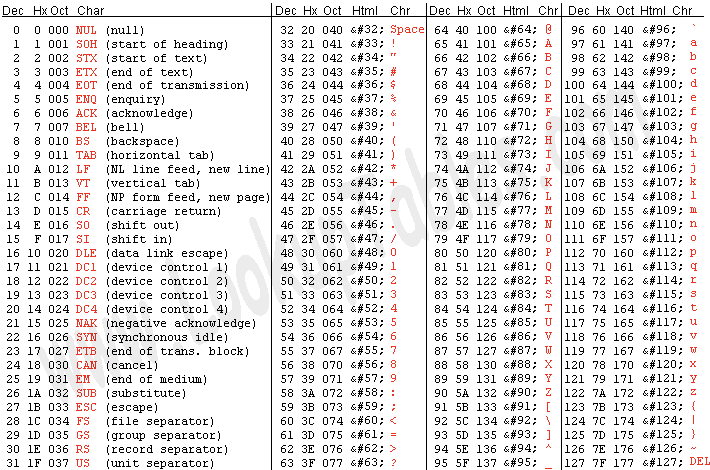Title: "[[Bits-Data-Representation-and-Manipulation]]"
Author:
- AllenYGY
status: DONE
tags:
- NOTE
- CO
- Lec2
created: 2023-11-03T00:59
updated: 2024-05-31T00:50Bits-Data-Representation-and-Manipulation
Binary Numbers: Bits
- 1 BIT = Binary digITs; 1 bit: 0 or 1
- 1 Byte = 8 bits
- A word is a fixed-sized piece of data handled as a unit
Data Representation
- Numeric Data Representation
- Unsigned integers
- Signed integers
- Sign-magnitude
- 1’s complement
- 2’s complement
- Real number representation
- Floating-point numbers
- Non-numeric Data Representation
Numeric Data Representation
Unsigned Integers Representations

Signed Integer Representations
- The left most bit (the most significant bit) is used as the sign bit. 最左位数表示正负
Sign-magnitude
- the remaining bits indicate the magnitude 剩余数字表示数字
- Problem: there will be 2 zero: 0000/1000
1’s complement
- the complement of its positive counterpart 除了第一位数剩余数字作反码操作
2’s complement
- one greater than the 1’s complement of the positive value
Property
- For positive number: Signed-magnitude, 1's complement, 2's complement forms are the same.正数原码反码补码一样
- After two backcode complements, the original number can be obtained 经过两次反码,补码操作可得到原数
- For binary odd number, the most right bit must be one.
- For Hexadecimal number each bit represents 4bits binary number
Floating-point numbers
- Scientific notation:
Half Precision Floating Numbers
Represented by 16 bits
- 16 bits: 1 for sign; 5 for exponent; 10 for Mantissa
- Exponent bias (offset): 24 -1 =15; range: [-14, 15]
- 01111 represents 0 in exponent


Single point Precision Floating Numbers
- 32 bits: 1 for sign; 8 for exponent; 23 for Mantissa

Non-numeric Data Representation
- Textual information
- Audio information
- Colors & Images
- Video information
ASCII code
-
The American Standard Code for Information Interchange
-
7 bits to represent 128 characters
- 0~31: control characters
- 32~127: symbols, digits and letters
-
48 represents '0'
-
65 represents 'A'
-
97 represents 'a'

Universal Character Set
- 16 bits
- Support unlimited characters
- To permit backward compatibility, ASCII is a subset of Unicode.
Digital Audio
- A microphone converts sound to an analog electrical signal
- An analog-to-digital converter (ADC) converts the analog signal to a digital signal through sampling
- CD audio, for example, has a sampling rate of 44.1 kHz (44,100 samples per second)
- An digital-to-analog converter performs the reverse process, from a digital to an analog signal
- An analog signal can be amplified and send to a speaker to produce sound
Image & Video
- A video consists of a stream of frames, or images, displayed at n>16 frames per second
- An Image consist of a collection of pixels
- Pixels are tiny dots of color
- A pixel’s color is represented by a binary number, its RGB value
- Thus a video can be seen as a huge binary number
Operations on Bits
- Binary Arithmetic Operations
- Addition and subtraction
- Sign Extension
- Overflow
- Boolean Logic Operations
- AND
- OR
- NOT
- XOR
Table Of Contents